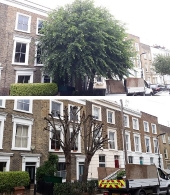

 6
6





QuickBooks set up and Bookkeeping for Small Businesses and Farms - jocelyncampbell.com
 2
2














QuickBooks set up and Bookkeeping for Small Businesses and Farms - jocelyncampbell.com
 3
3




Visit Redhawk's soil series: https://permies.com/wiki/redhawk-soil
How permies.com works: https://permies.com/wiki/34193/permies-works-links-threads










Jay Angler wrote:I know that different types of plants have been studied to determine which specific pollutants they remove from the air. (For example, the spider plant is known to suck up formaldehyde.) I wonder if the type of moss matters and by how much?
Jay Angler wrote:Since moss often does well in the shade, this seems like it would do well inside and maybe help "sick building syndrome"?
Jay Angler wrote:I admit I've loved moss ever seeing a beautiful moss garden in Japan. It was like a thick carpet compared to what North American's prized as "lawn" at the time. I would love to have an outbuilding with a moss roof and walls. That's got me thinking... dangerous thing that!
QuickBooks set up and Bookkeeping for Small Businesses and Farms - jocelyncampbell.com
 2
2




I *adore* that thread. I so wish I had the time to do that sort of art, but I'm too busy trying to get edible things growing on my shady property and with trying to stop Himalayan Blackberry from taking over faster than I can discourage it. I wish moss would stop it! At least its berries taste good.I think moss and moss gardens are beautiful too! Did you know we have a moss art thread? https://permies.com/t/13614/sculpture/art/Moss-art
It's an old enough thread that some of the picture links are broken but I think there's enough remaining as inspiration for you.
Visit Redhawk's soil series: https://permies.com/wiki/redhawk-soil
How permies.com works: https://permies.com/wiki/34193/permies-works-links-threads
 4
4




A human being should be able to change a diaper, plan an invasion, butcher a hog, conn a ship, design a building, write a sonnet, balance accounts, build a wall, set a bone, comfort the dying, take orders, give orders, cooperate, act alone, solve equations, analyze a new problem, pitch manure, program a computer, cook a tasty meal, fight efficiently, die gallantly. Specialization is for insects.
-Robert A. Heinlein
 4
4




A build too cool to miss:Mike's GreenhouseA great example:Joseph's Garden
All the soil info you'll ever need:
Redhawk's excellent soil-building series











 2
2




Chris Kott wrote:
What if raised roadways, concrete medians, and even the sides of skyscrapers could incorporate this moss filter technology? What if we could have the air cleaning capacity of 275 trees for every 4'x8' (though the planted area looks to be more like 10'x10') space we could cover in such panels, and the undersides of roadways and bridges were the filters that cleaned the air where it was being dirtied?
We don't even need the mass-deployment versions to have that kind of air cleaning capacity. If we could only get the simplified system to operate a tenth as effectively, we'd still be cramming in over a dozen trees' worth of cleaning space in spaces where right now there is bare impermeable building material, usually concrete, brick, or glass.
Chris Kott wrote:I think what we could use in temperate climates and sub-tropical to tropical ones, too, are green window shutters built on this model or that of a climate appropriate green wall, or a mix. The shutters would be positioned, or moved, to block the sun at strategic points of the day, to avoid heating the building when that's not desired, and moving to preserve the view.
Really, I want to build such a facade myself, watering it with household greywater. I think that it might be a brilliant way to clean greywater, passing it through a green wall filter that cleans the air in the space, as well as the water.
QuickBooks set up and Bookkeeping for Small Businesses and Farms - jocelyncampbell.com
 1
1




A human being should be able to change a diaper, plan an invasion, butcher a hog, conn a ship, design a building, write a sonnet, balance accounts, build a wall, set a bone, comfort the dying, take orders, give orders, cooperate, act alone, solve equations, analyze a new problem, pitch manure, program a computer, cook a tasty meal, fight efficiently, die gallantly. Specialization is for insects.
-Robert A. Heinlein
 2
2




Creating edible biodiversity and embracing everlasting abundance.
 1
1




A human being should be able to change a diaper, plan an invasion, butcher a hog, conn a ship, design a building, write a sonnet, balance accounts, build a wall, set a bone, comfort the dying, take orders, give orders, cooperate, act alone, solve equations, analyze a new problem, pitch manure, program a computer, cook a tasty meal, fight efficiently, die gallantly. Specialization is for insects.
-Robert A. Heinlein
 4
4




Chris Kott wrote:I don't know if the farmers' markets around you guys sell a product like this, but I have come to see powdered moss mixture being sold in cartons. The directions suggest that you can pour in buttermilk, or sometimes just water, shake, and apply to any surface to which it will adhere, and it will live with varying degrees of success.
I would love for there to be a powdered moss mix we could take and apply to prepared concrete or brick surfaces, with misters or gravity-fed greywater drippers, where that's all we'd have to do, and it would thrive.
It is on my list of things to do to start experimenting with the stuff.
-CK
 1
1




A human being should be able to change a diaper, plan an invasion, butcher a hog, conn a ship, design a building, write a sonnet, balance accounts, build a wall, set a bone, comfort the dying, take orders, give orders, cooperate, act alone, solve equations, analyze a new problem, pitch manure, program a computer, cook a tasty meal, fight efficiently, die gallantly. Specialization is for insects.
-Robert A. Heinlein
 2
2




Creating edible biodiversity and embracing everlasting abundance.
 4
4




A human being should be able to change a diaper, plan an invasion, butcher a hog, conn a ship, design a building, write a sonnet, balance accounts, build a wall, set a bone, comfort the dying, take orders, give orders, cooperate, act alone, solve equations, analyze a new problem, pitch manure, program a computer, cook a tasty meal, fight efficiently, die gallantly. Specialization is for insects.
-Robert A. Heinlein






 6
6




Chris Kott wrote:This is something to be done in addition to planting trees, in spaces where you couldn't possibly grow trees.
What's wrong with also culturing moss-scapes?
-CK
QuickBooks set up and Bookkeeping for Small Businesses and Farms - jocelyncampbell.com
 1
1




Hugo Morvan wrote:This makes me so grumpy. I don't buy it for a second! How can a bit of moss be as efficient as 275 trees? And even if it were true, moss grows on forest floors and up trees too!
I'm pretty sure this isn't calculated properly. Why would this magazine anyway?
I've heard, the cost of planting trees can be gotten to as low as 1 dollar a tree. So for 275 dollars you can plant as many trees as this thing claims to be. I bet maintenance costs easily twenty thousand a year. Just plant trees, why is that so difficult for people to understand?
Of course it's fashionable to cheerlead any green "solution", but fashion comes and goes.. The cities are booming and afloat in money. Why can't they pay for some real solutions? Why are the homeless populations exploding in the same cities that feel great about themselves to splash tax payers money on these non solutions? This feels like a green wash, fancy green feel good candy.
And it's not only cities. It's the whole continent. The EU is burning USA old growth forest, to make "green" electricity.. They get to call it renewable energy because they plant new baby trees. It's utter insanity. And they manage to sell this as a good thing to the people.
A human being should be able to change a diaper, plan an invasion, butcher a hog, conn a ship, design a building, write a sonnet, balance accounts, build a wall, set a bone, comfort the dying, take orders, give orders, cooperate, act alone, solve equations, analyze a new problem, pitch manure, program a computer, cook a tasty meal, fight efficiently, die gallantly. Specialization is for insects.
-Robert A. Heinlein
 2
2




Toby Hemenway, among others, have specifically spoken of the benefits of urban life. The trick is to do as you've suggested and "do cities right". There is an artificial wetland in southern Ontario that is the prime sewage treatment for a small city and it has become a tourist attraction due to the birds who have made it their home. Most of our modern problems have no one perfect solution but require a "guild" of solutions that support and work with each other. A green roof will not replace a poly culture forest and is far more "expensive" to build, but it can still provide food and nesting sites for birds, bugs (which are globally in decline - not just bees are threatened) and amphibians. So yes, it would be nice if trees were planted as well as moss towers, but often if an idea takes off, people find cheaper ways to accomplish the same thing. If we can find acceptable cheap ways to grow moss in many of the highly polluted cities in this world, I see that as a net gain that would not only help the people, it would help city trees as well!Now that would be the way to start healing cities. We use our wastes, and our waste heat, to fuel natural processes that clean the environment, so that human urban activity is a net environmental benefit.
Visit Redhawk's soil series: https://permies.com/wiki/redhawk-soil
How permies.com works: https://permies.com/wiki/34193/permies-works-links-threads
 1
1
 1
1




Creating edible biodiversity and embracing everlasting abundance.




Luetta
@ Jubilee Permaculture Farm




A human being should be able to change a diaper, plan an invasion, butcher a hog, conn a ship, design a building, write a sonnet, balance accounts, build a wall, set a bone, comfort the dying, take orders, give orders, cooperate, act alone, solve equations, analyze a new problem, pitch manure, program a computer, cook a tasty meal, fight efficiently, die gallantly. Specialization is for insects.
-Robert A. Heinlein

|
Morgan Freeman narrated the birth and life of this tiny ad:
The new gardening playing cards kickstarter is now live!
https://www.kickstarter.com/projects/paulwheaton/garden-cards
|







